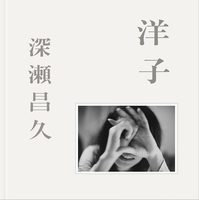$37.37
預訂中,購買後立即進貨
一般需等候約 20 天
- Softcover
- 160 pages
- 211 × 295 × 16 mm
- ISBN 9784865411522
- Japanese, English
- Nov 2022
In the summer of 2020, Naoya Hatakeyama was commissioned by the city hall of his hometown, Rikuzentakata City, to photograph the Memorial Ruins of 2011 Tohoku Earthquake at four locations in Rikuzentakata, including "Former Michi no Eki Takata-Matsubara (Tapic 45)", "Rikuzentakata Municipal Kesen Junior High School"," Shimojuku Settlement Promotion Housing Building1", and "Rikuzentakata Youth Hostel".
The city will be preserving and maintaining these ruins with the plan that they will be open to the public, but at the time these photographs were taken with a digital camera, the interior of the buildings were so tightly buried with soil and they looked exactly the same as 10 years ago, when 2011 Tohoku Earthquake struck.
4 remains that will be preserved and maintained in the near future, and these photographs taken before then. What kind of scenery will each memorials lead to in the overall time, and How will they open the door that is between the consciousness and memories held by people?
These photos taken 10 years after 2011 Tohoku Earthquake, are quietly placed as a kind of bulletin to unknowable in the overall time.
"Kesen Junior High School, a public school located on the west bank of the mouth of the Kesen River looking out on Hirota Bay, was founded in 1947 after the war ended as one of a group that included two elementary schools in the neighborhood.
Two years later in 1949, the schools were merged and Kesen Junior High School was opened in this location. When the Chile earthquake and tsunami occurred in 1960, the embankment of the Kesen River failed to prevent overflow so that the first floor of the two-story wooden school building was reportedly flooded to a height of 85 centimeters. The next year in 1961, the city's first indoor gymnasium equipped with the latest gymnastics equipment was completed. Olympic gymnasts visited the gymnasium to give exemplary gymnastic performances, and it was also used for shows put on by famous singers. Around that time, the student body numbered over three hundred. Much later in 1981, a three-story reinforced concrete school building was constructed. The school was inundated by the tsunami caused by the Tohoku Earthquake which rose so high that it covered the roof of the building and swept the gymnasium away. Fortunately, all of the 86 students attending chorus practice in the gymnasium at the time quickly evacuated safely to the high ground nearby. After the earthquake disaster another school building in the city, Yahagi Junior High School, which had been closed, was put into use so that the students could continue their schooling. In 2018, Kesen Junior High School rung down the curtain on its 71-year history when it was merged with Rikuzentakata Municipal Daiichi Junior High School.
Kesen Junior High School is the alma mater of the photographer of this photograph collection."
(Quoted from the text "Rikuzentakata Municipal Kesen Junior High School" by Naoya Hatakeyama)
Naoya Hatakeyama
born in 1958 in Iwate Prefecture, Japan. Hatakeyama, a student of Kiyoji Otsuji, completed graduate studies at Tsukuba University in 1984. Since then, Hatakeyama has been based in Tokyo, a city which has served as a model from which he has developed a body of work concerned largely with the relationship between nature, the city and photography. In addition to his participation in numerous solo and group exhibitions, Hatakeyama's photographs are found in public collections including the National Museum of Modern Art, Osaka; the National Museum of Modern Art, Tokyo; Tokyo Metropolitan Museum of Photography; the Museum of Fine Arts, Houston; Yale University Art Gallery, New Haven; the Swiss Foundation for Photography, Winterthur; la Maison EuropEéenne de la Photographie, Paris; and the Victoria & Albert Museum, London.









































